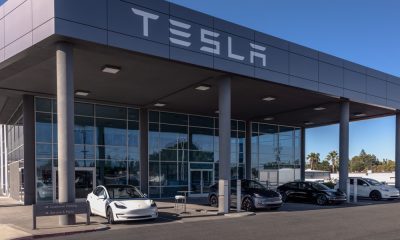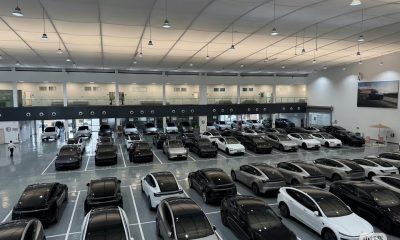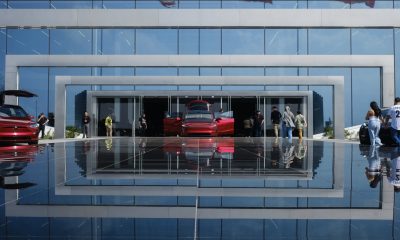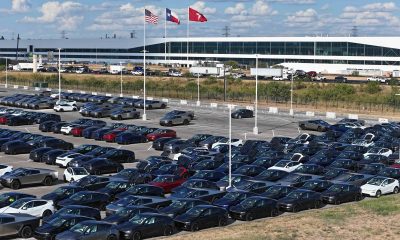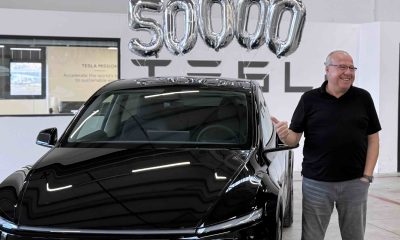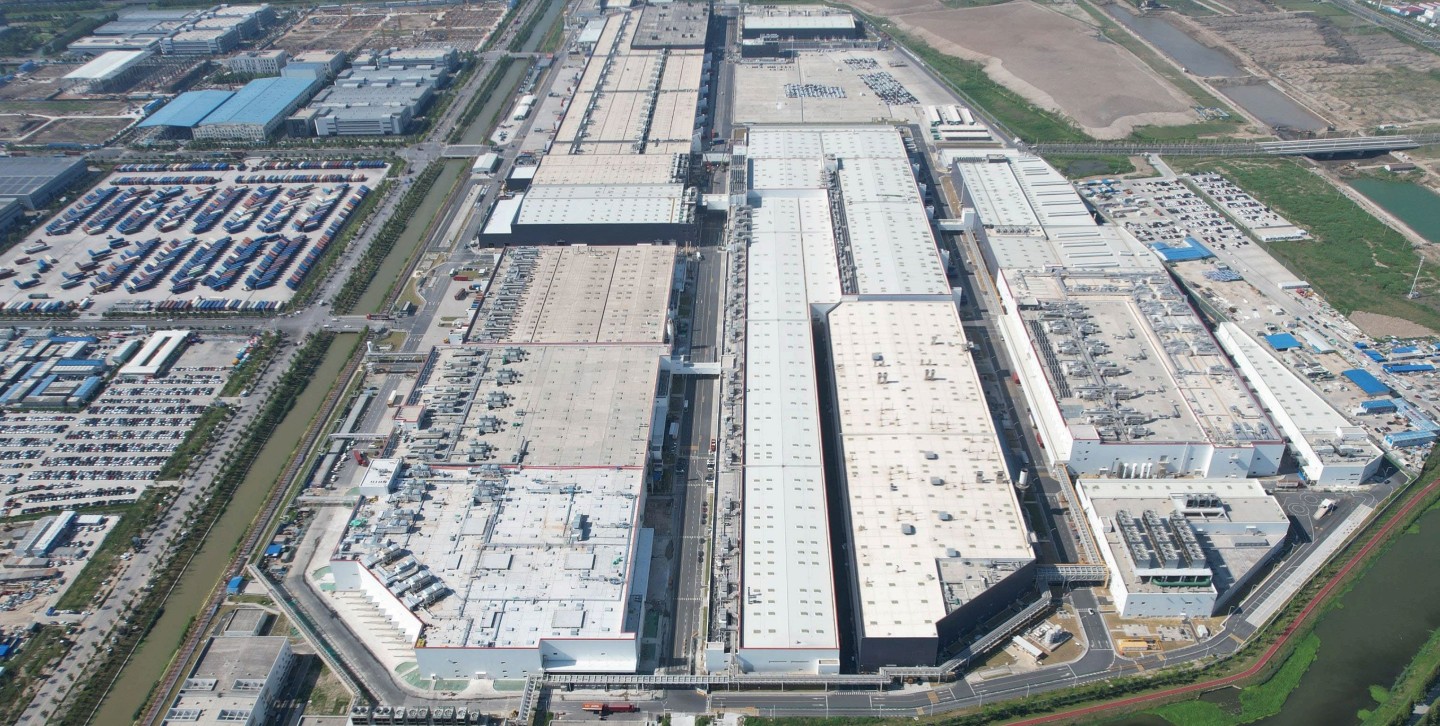
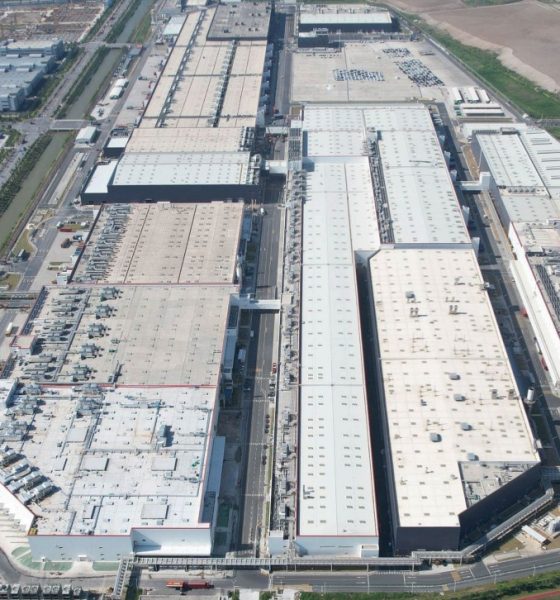
News
Tesla to resume Giga Shanghai Phase 1 battery plant to support Project Highland: report
With the Tesla Model 3’s Project Highland update seemingly just around the corner, the electric vehicle maker seems to be preparing itself for an explosion of orders for the revamped vehicle. This was, at least, suggested in recent reports from insiders in China.
Citing individuals reportedly familiar with the matter, Chinese publication 36 Krypton recently reported that the Model 3 Project Highland would start deliveries around late September. To make sure that the revamped Model 3’s ramp goes smoothly, Tesla China is reportedly looking to resume production at Gigafactory Shanghai’s Phase 1 battery plant.
Back in July, reports emerged suggesting that Tesla China was laying off workers that were assigned to Giga Shanghai’s Phase 1 battery assembly facility. At the time, some of the employees affected by the change were reportedly given the option to transfer to a different workshop in the complex, such as the paint shop, the stamping area, or the general assembly line.
As per 36Kr, the impending demand for the Model 3’s Project Highland update is now prompting Tesla to resume operations at Giga Shanghai’s Phase 1 battery facility. “Now demand is up, so Phase 1 is ready to reopen again,” the publication’s source noted.
Giga Shanghai is reportedly home to three battery facilities: Phase 1, Phase 2, and Phase 2.2. Phase 1 is reportedly the smallest and oldest in the facility, and it is also the least automated. Meanwhile, Phase 2 is reportedly Giga Shanghai’s main battery facility, and Phase 2.2 is the newest, built just over half a year ago. 36Kr noted that overall, Giga Shanghai’s Phase 1 battery plant can produce about 3,000 to 4,000 battery packs per week, while Phase 2 and Phase 2.2 can each produce 10,000 packs per week.
This suggests that at full production, Giga Shanghai’s battery facilities could produce around 100,000 battery packs per month. Such an output would probably be needed, especially if the Model 3’s Project Highland update is well received by consumers. So far, this does seem to be the case, with previous reports hinting that more Model 3 buyers are waiting for the Project Highland update instead of taking delivery of a current generation vehicle today.
Don’t hesitate to contact us with news tips. Just send a message to simon@teslarati.com to give us a heads-up.
Elon Musk
Will Tesla thrive without the EV tax credit? Five reasons why they might
Here are five reasons Tesla might be in better shape without the tax credit being available.
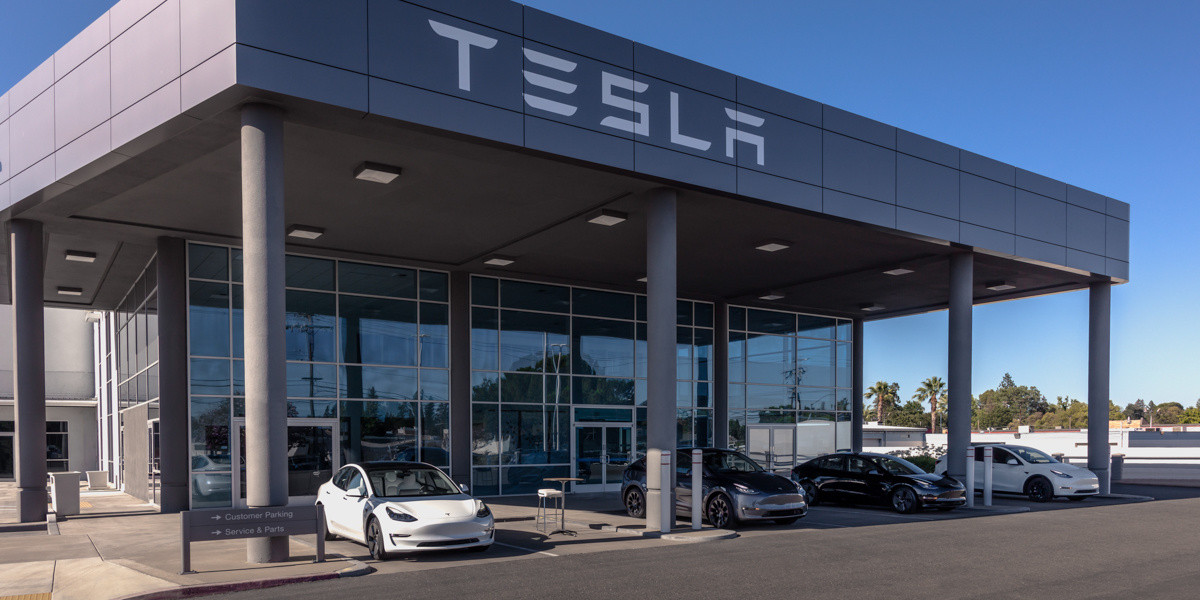
The $7,500 EV tax credit has officially expired, as it came to its closure at midnight on September 30. Many are wondering what will happen to the EV makers in the United States that had a huge competitive advantage over their competitors, a $7,500 discount that could be applied at the point of sale.
Tesla stands to thrive from the lack of tax credit, and although it is hard to believe, brighter days could be ahead for the company, starting with Q4, which began today.
Here are five reasons Tesla might be in better shape without the tax credit being available:
No Tax Credit Means Price Cuts
Tesla has to adjust its pricing strategy now that the $7,500 tax credit is gone, and when it lost the previous tax credit after reaching its cap in 2019, it used a more affordable model to surge sales. At the time, that more affordable model was the Model 3.
Tesla boosted deliveries by over 50 percent that year without any tax credit by simply offering a cheaper model. The credit, in a way, distorts the market, and companies, while attempting to innovate, are able to offer the discount with the help of the government.
Tesla price cuts push EV market toward affordability with broader influence
Companies will now have to weigh what they can discount their vehicles by to keep profits reasonable, but also stoke demand.
Ultimately, Tesla has the ability to use manufacturing and technological efficiencies to increase affordability. It has more control to fluctuate pricing, and price cuts could be on the way.
The Playing Field Becomes Fairer
Companies like Ford and General Motors have also reaped the benefits of the tax credit, but their situation is much different than Tesla’s.
Ford and GM are not profitable on their EV projects, so the EV tax credit has been relied upon to mask high production costs and dealer markups, which have widely impacted their demand. Ford is among the more popular brands that have dipped their toes into the EV market, but they have been forced to adjust their strategy on several occasions due to a lack of profits.
Tesla’s vehicles have been profitable for some time, and the company has been able to make money from its offerings faster. Cybertruck was profitable after just one year of production.
Tesla Cybertruck achieves positive gross margin for first time
Removing subsidies will expose the financial weaknesses of those domestic competitors, and we will likely see those companies scale back their EV efforts in the coming months and years. This will help Tesla more than having access to the tax credit would, which is something CEO Elon Musk has said for years:
First of all, Tesla hasn’t had that consumer tax credit for years & we didn’t ask for this one – GM & Ford did
— Elon Musk (@elonmusk) October 6, 2022
In my view, we should end all government subsidies, including those for EVs, oil and gas
— Elon Musk (@elonmusk) November 14, 2024
Tesla’s Maturity Shows and Investor Confidence Will Boost
Tesla was once dismissed as a subsidy-dependent startup, but that narrative truly died years ago, as it continued to perform well against competitors even after losing the tax credit.
Musk has said himself that the cancellation of these subsidies “will only help Tesla,” as it will highlight the company’s ability to be self-sufficient.
Elon Musk reiterates call for all subsidies on all industries to be removed
Using things like manufacturing efficiencies and vertical integration, Tesla has been less dependent than others on help to build its cars. If anything, investors will likely see the next few months as a make-or-break period for companies building EVs.
Subsidies Sometimes Can Inhibit True Innovation
Some companies can tend to become complacent when government subsidies are offered on their products. Instead of making things better and trying to find new ways to make cars more affordable, some can lean on the help they’re getting.
After subsidies ended for Tesla in 2019, the company achieved two major breakthroughs: the Cybertruck and its energy storage projects scaled to gigawatt-hours. The argument is not that Tesla becomes complacent with the tax credits, but the company is going to feel more pressure to fight for innovation now that its back is up against the wall.
It already offers a better product from a tech standpoint, so affordability could truly be the next major change we see.
Affordable Models Will Be Even More Sought After
Tesla will launch its affordable models this quarter, and with no more tax credit to lean on, these new cars will be what many consumers go for.
If Tesla can launch a model that is close to $30,000 without a tax credit, the company stands to regain a significant portion of its market share from competitors that have eroded it over the past few years. This will undercut the vast majority of electric cars that are currently offered.
- 2025 Nissan Leaf S Trim – $28,140
- 2025 Fiat 500e Base Trim – $32,500
- 2025 Chevrolet Equinox EV – $33,600
Those are the three most affordable EVs available in the U.S. right now, and those prices are without the EV tax credit. If Tesla can get close to $30,000, it will truly make a mark and there might not be all that much of a change in its yearly delivery figures.
News
Tesla makes first move to counter loss of $7500 EV tax credit
Essentially, Tesla is reducing the price of a vehicle for those who choose to lease the vehicle by $6,500.
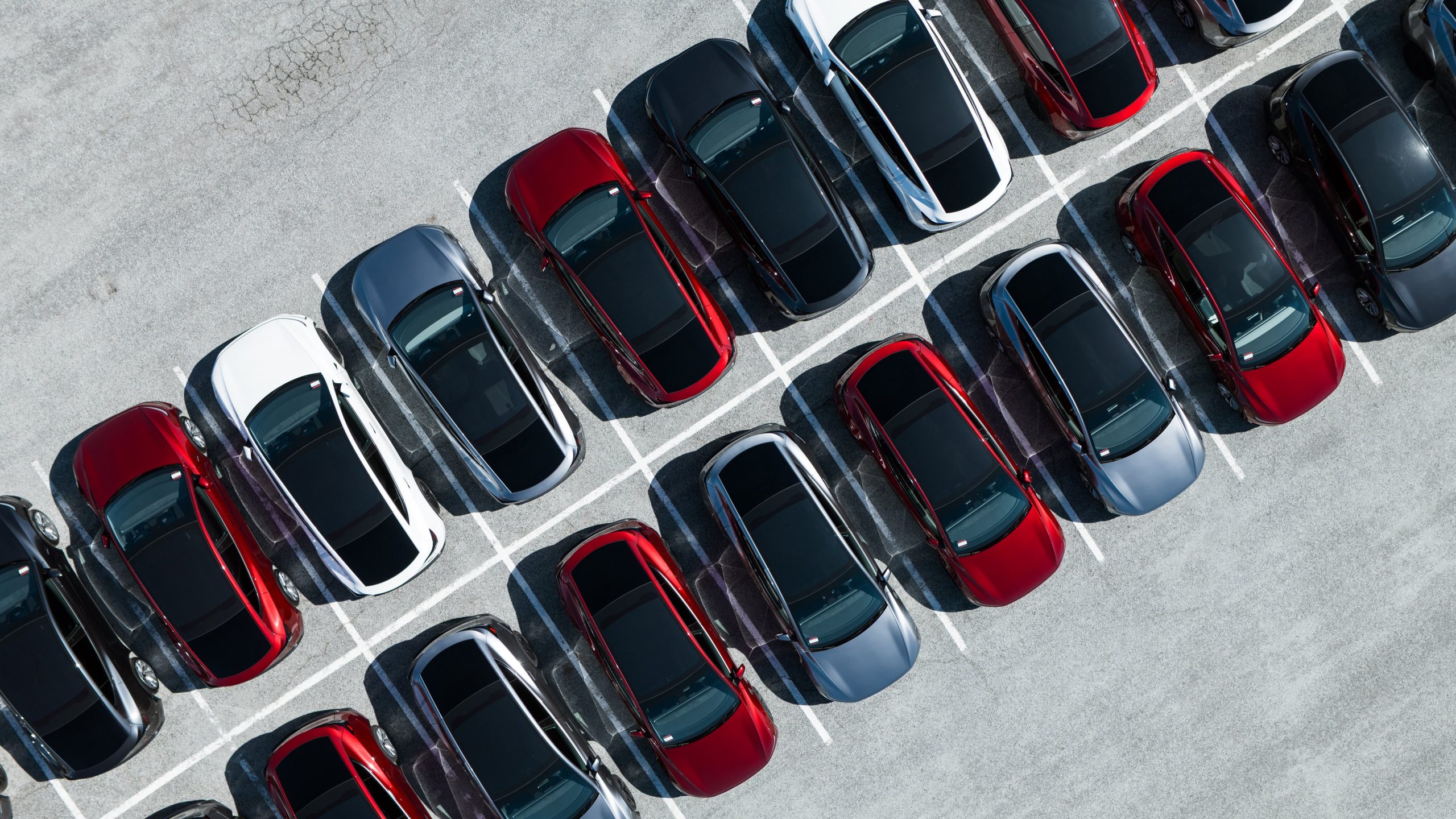
Tesla has made its first move to counter the loss of the $7,500 electric vehicle tax credit by offering a $6,500 lease credit, which it is offering internally.
Essentially, Tesla is reducing the price of a vehicle for those who choose to lease the vehicle by $6,500, which is a bit of a double-edged sword. However, it appears the company had this strategy ready to fire with the expiration of the EV tax credit, which occurred last night.
Tesla makes a big change to reflect new IRS EV tax credit rules
Tesla is offering the lease credit automatically, it says on its website, as the monthly payment amount already reflects the $6,500 discount. The company said in its terms:
“Monthly lease payment already includes the $6,500 Tesla lease credit, which is subject to change or end at any time. Order does not guarantee eligibility.”
The lease credit offer mostly offsets the loss of the tax credit, although, from a financial standpoint, it seems Tesla will take a bit of a hit in its profit margins. It will be interesting to see how long the company maintains the lease incentive because of its pressure on profits.
Lease pricing for the Model 3 and Model Y was also adjusted by Tesla after the expiration of the tax credit at midnight. The company increased these prices by up to 11 percent, as the Model Y’s payment range increased from $479 to $529 to between $529 and $599.
NEWS: Tesla has increased lease pricing for the Model Y and Model 3 in the U.S. by up to 11%, but Tesla has also introduced a $6,500 lease credit to help offset the loss of the EV credit.
“Monthly lease payment already includes the $6,500 Tesla lease credit, which is subject to… pic.twitter.com/NyHV1VBH3x
— Sawyer Merritt (@SawyerMerritt) October 1, 2025
Model 3 prices came up from between $349 and $699 to $429 and $759.
These are with default options, including $3,000 down, a 36-month lease period, and 10,000 miles per year.
How Tesla’s sales will respond to the removal of the tax credit is one of the more discussed topics in the community over the past few months.
EV tax credit rule adjustment provides short-term win, but long-term warning
It was relatively evident that the Trump Administration planned to get rid of any subsidies for electric vehicles, something that Tesla CEO Elon Musk supported.
However, the true impact likely will not be seen until Q1 2026, as the credit will still be applied to any order placed before September 30. Leases do not apply to this condition, as deliveries had to be completed by yesterday to apply. Deliveries made after September 30 must be financed or paid for in cash.
News
Starlink makes a difference in Philippine province ravaged by typhoon
The Severe Tropical Storm battered the province, leaving communications networks in the area in shambles.
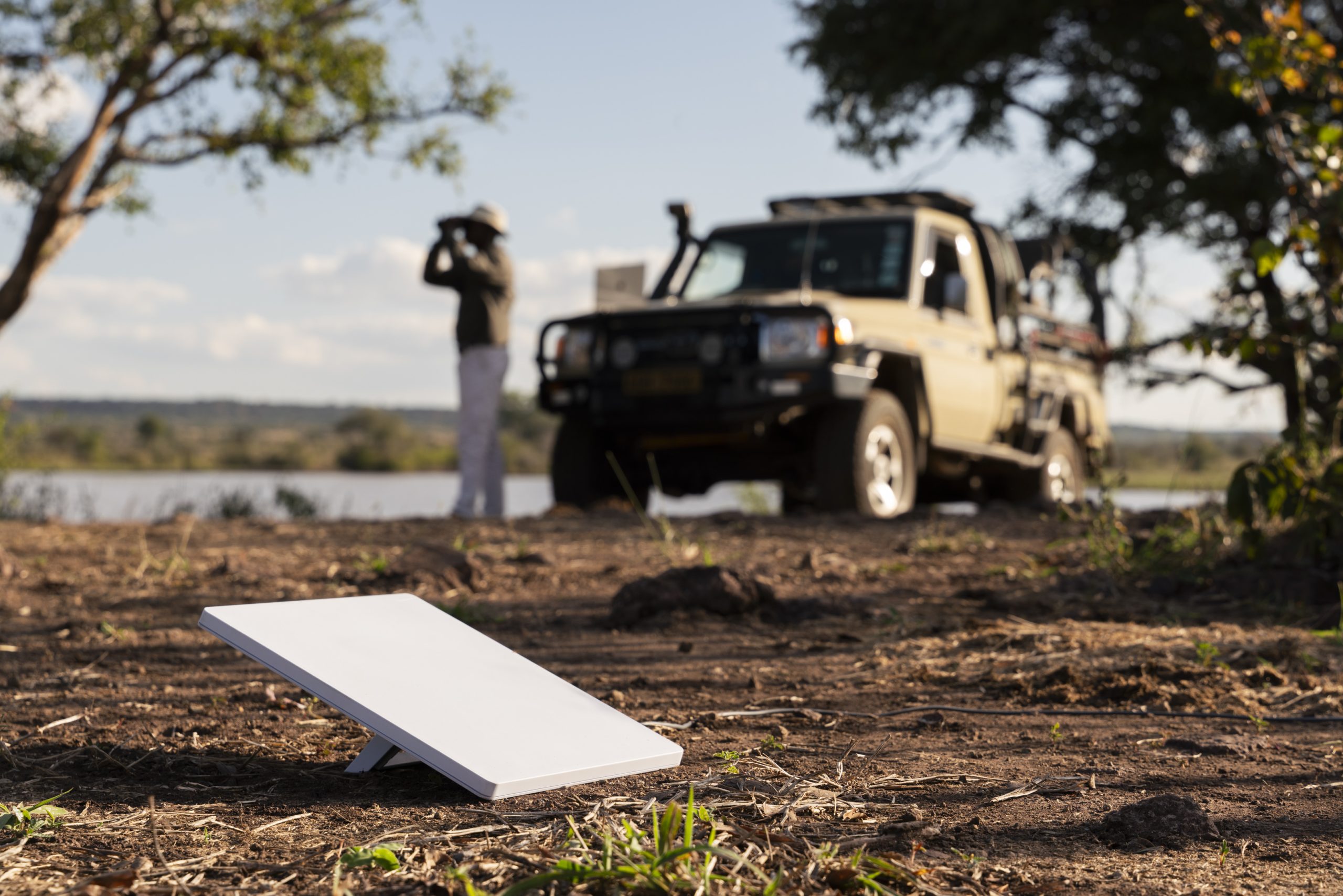
The Philippines’ Department of Information and Communications Technology (DICT) is using Starlink to provide connectivity in the municipality of Masbate, which was affected by Severe Tropical Storm Opong (international name Bualoi).
The Severe Tropical Storm battered the province, leaving communications networks in the area in shambles.
Starlink units enhance connectivity
DICT Secretary Henry Aguda visited the province to assess internet and communications infrastructure and deliver 10 additional Starlink satellite units, according to the Philippine News Agency. The is move aimed at strengthening emergency response and restore digital access to the area.
Aguda met with Masbate Governor Richard Kho during his visit and joined telecommunications representatives in inspecting provincial offices, free charging stations, and Wi-Fi connectivity sites for residents.
According to DICT officer-in-charge Rachel Ann Grabador, three Starlink units, 10 routers, and a 2kW solar-powered station have already been deployed in the province following the typhoon. The units have been installed at key facilities such as Masbate Airport’s communications tower and the Masbate Provincial Hospital’s administrative office.
Game-changing technology
Thanks to its global coverage and its capability to provide high-speed internet connectivity even in remote areas, Starlink has become the best communications solution that can be deployed in the aftermath of natural disasters. Its low-cost kits, which are capable of of providing fast internet speeds, are also portable, making them easy to deploy in areas that are damaged by natural disasters.
As noted in a Space.com report, there are currently 8,475 Starlink satellites in orbit, of which 8,460 are working, as of September 25, 2025. Initially, SpaceX had filed documents with International regulators to place about 4,000 Starlink satellites in Low Earth Orbit. Over time, however, the number of planned Starlink satellites has grown, with SpaceX aiming to launch as many as 42,000 Starlink satellites to fully connect the globe.
-
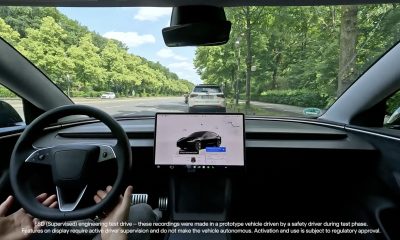
 Elon Musk6 days ago
Elon Musk6 days agoTesla FSD V14 set for early wide release next week: Elon Musk
-
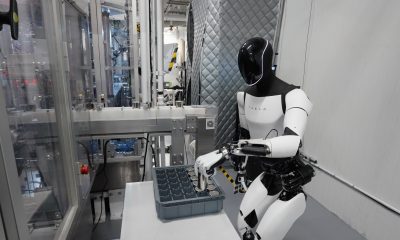
 News4 days ago
News4 days agoElon Musk gives update on Tesla Optimus progress
-
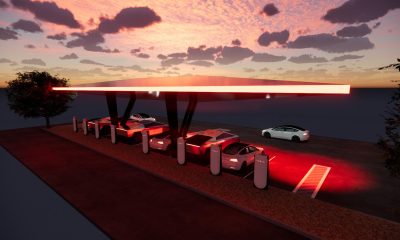
 News6 days ago
News6 days agoTesla has a new first with its Supercharger network
-
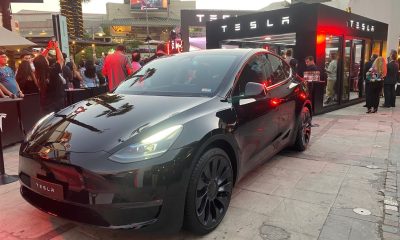
 News1 week ago
News1 week agoTesla job postings seem to show next surprise market entry
-
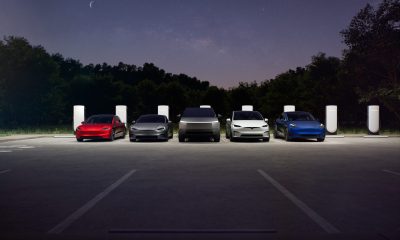
 News1 week ago
News1 week agoTesla makes a big change to reflect new IRS EV tax credit rules
-
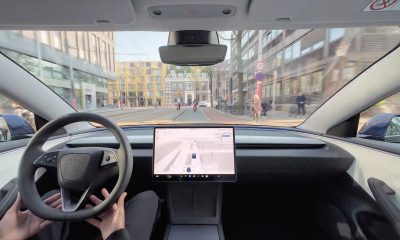
 Investor's Corner5 days ago
Investor's Corner5 days agoTesla gets new Street-high price target with high hopes for autonomy domination
-
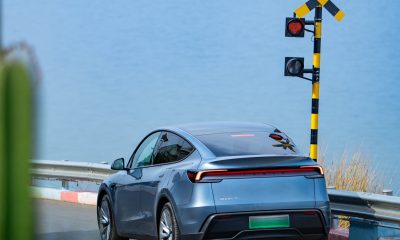
 Lifestyle4 days ago
Lifestyle4 days ago500-mile test proves why Tesla Model Y still humiliates rivals in Europe
-
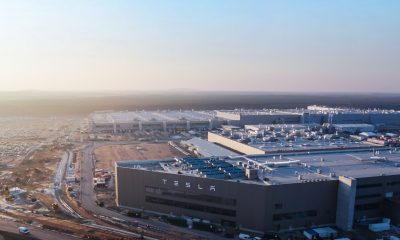
 News2 days ago
News2 days agoTesla Giga Berlin’s water consumption has achieved the unthinkable


